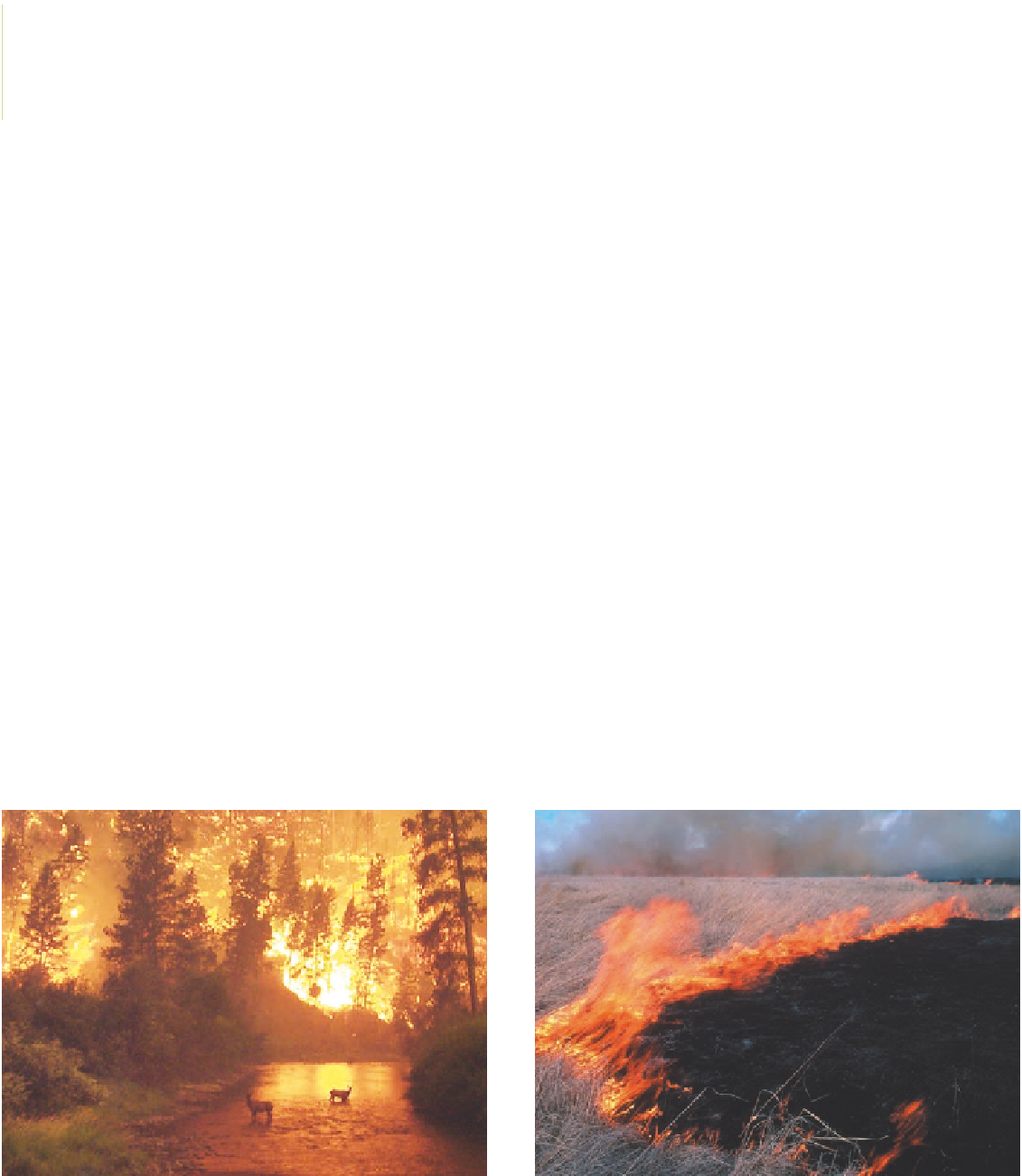Geoscience Reference
In-Depth Information
D I S C O V E R . . .
WILDFIRES
When most people see a wildfire, they assume it to be a
bad thing that must be suppressed at all costs. Plant
geographers and ecologists know, however, that fire is a
natural part of many ecosystems and produces important
ecological benefits. Regular fires reduce the amount of dead
wood and thus lower the likelihood of potentially larger wild-
fires by removing their fuel. Fires often remove alien plants
that compete with native species for nutrients and space.
Fires also remove undergrowth in forests, which allows
sunlight to reach the forest floor, thereby supporting the
growth of native species. The organic debris produced by a
fire adds nutrients to the soil to be used later by plants and
animals. Fires can also provide a way of controlling insect
pests by killing off the older or diseased trees and leaving
the younger, healthier trees.
Overall, fire is a catalyst for promoting biological
diversity and healthy ecosystems. Jack pine forests of the
upper Midwest, for example, are highly dependent on fire
for renewal because they have serotinous cones that require
intense heat to open and release their seeds. If these for-
ests did not burn periodically, the trees would gradually be
replaced with less fire-adapted species and other plants
and animals within the ecosystem would be threatened.
Grasslands are also highly dependent on fire because it
prevents brush and trees from invading the prairie. Prairie
grasses and flowers can survive a fire because their roots
extend deeply into the ground.
Under natural circumstances, wildfires are usually
started by lightning and are particularly likely in drought
conditions. In grasslands, ranchers often set controlled
fires to reduce brush and rejuvenate the prairie. Most of the
wildfires you hear about, unfortunately, are the catastrophic
events such as those in California nearly every fall that result
in the loss of homes and even human life. Many of these
begin with lightning, but some have been linked to arson.
These fires are particularly intense due to a combination of
factors, including previous fire suppression and buildup of
dead wood that fuels the fire. Another factor is that more
people have moved into drier areas that are naturally fire-
prone, especially in hilly country where downsloping winds
such as the Santa Ana winds described in Chapter 6 fan a
fire. Although these fires can be tragic, remember that the
overall ecological benefits of fire far outweigh the negative
aspects often portrayed.
Wildfires are one of the most impressive natural phenomena on Earth, as the left-hand photograph from a fire in Montana attests. Although
wildfires are most commonly associated with forests, they are a critical part of the prairie ecosystem because they recycle nutrients and
remove woody vegetation. The right-hand image is of a prairie fire in the Great Plains.



